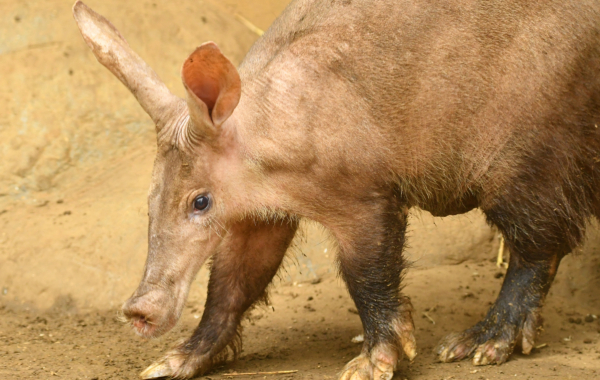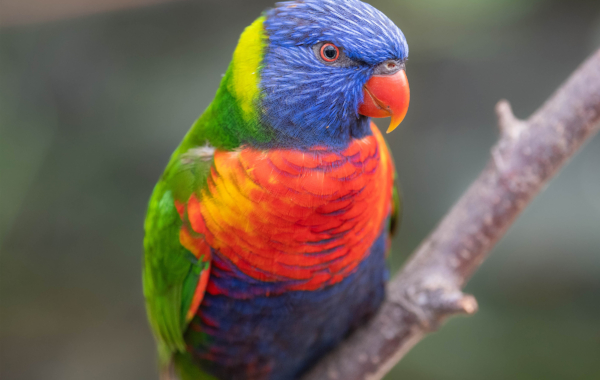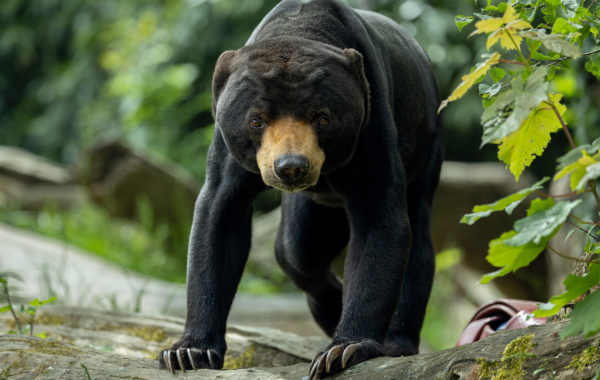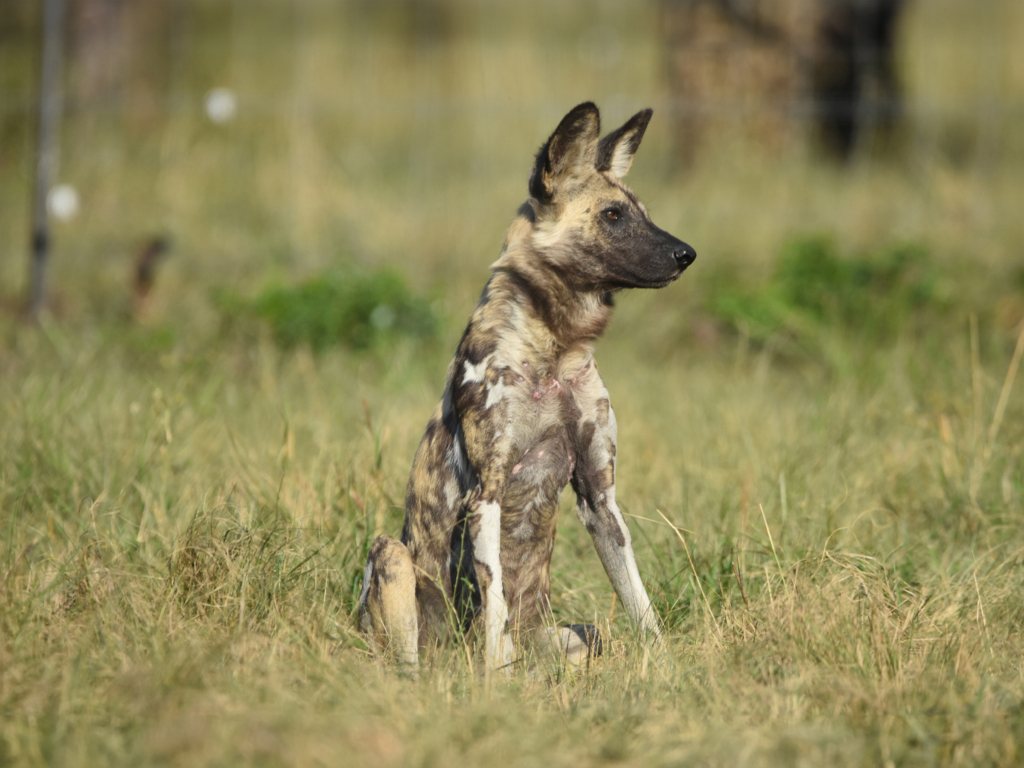One of the most striking features of all hornbills are their large beaks, horns, or casques. The exact function of them is still not fully understood. Some scientists think it helps a hornbill to advertise itself as fully mature, whilst others think it amplifies their calls.
This species is excellent at dispersing fruit seeds through their droppings, making them an important part of the ecosystem. Hornbills also use their tweezer-like beaks to pick fruit from trees.
The Rufous hornbill suffers from hunting and loss of habitat, as a result of logging and agriculture. Their feathers are also used to make traditional headdresses.

Animals in Clock of the Mountain
Rufous Hornbill
Buceros hydrocorax
From: Philippines
Status: Vulnerable
Quick Fact: The Rufous hornbill is one of the few birds with eyelashes. These modified feathers help to keep debris out of their eyes.
Find me in: Clock of the Mountain
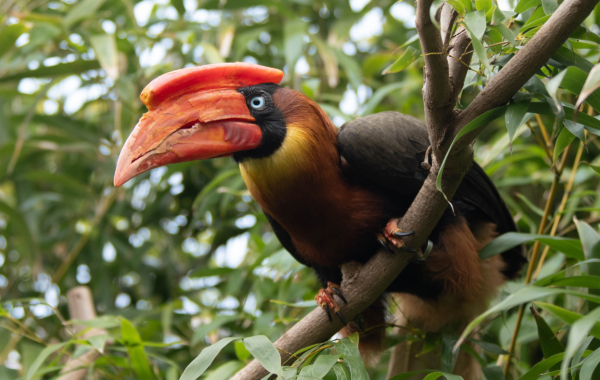
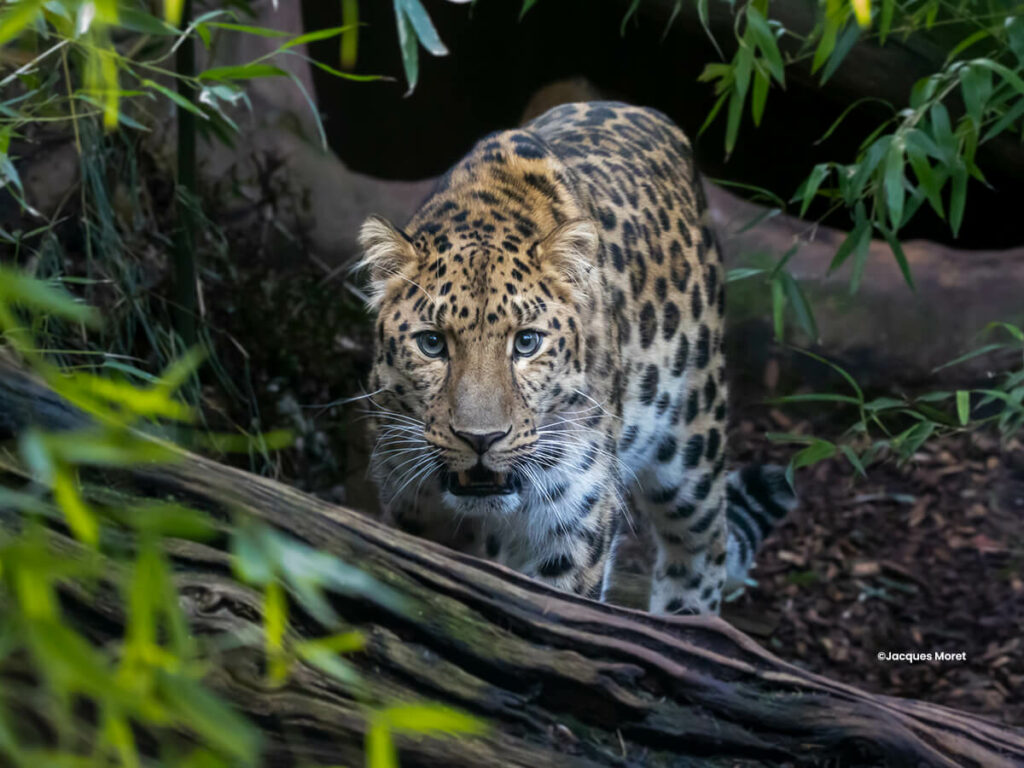
Adopt an animal at Colchester Zoo
You will be helping to fund our work, as well as our charity, Colchester Zoological Society, which assists conservation projects all over the world!

